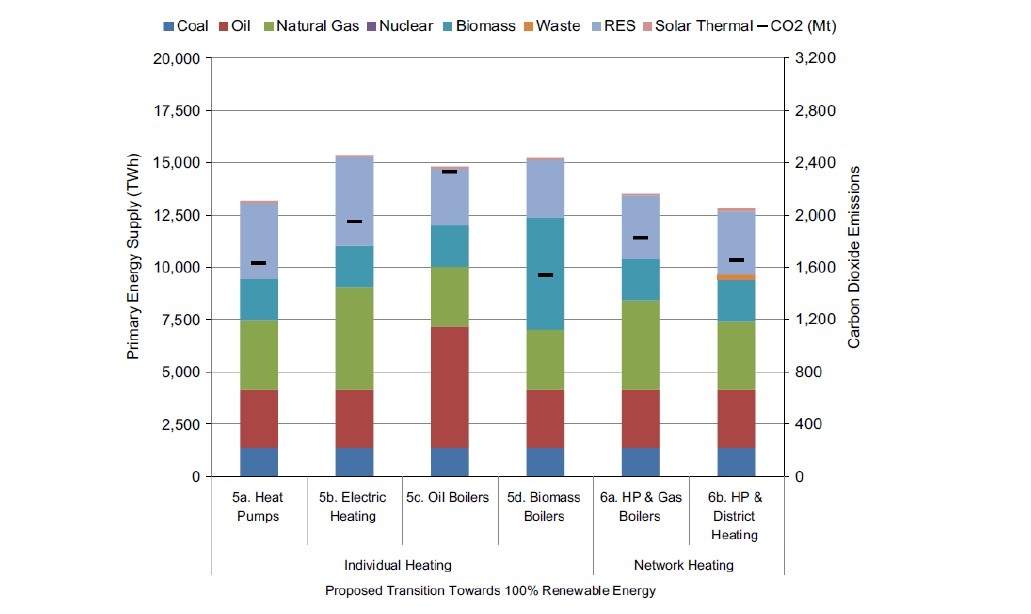District Energy networks are solidly establishing in many cities across the globe. Those that already had the networks, for instance in Eastern Europe, demand the leading District Energy companies to continue modernizing the networks. You will be surprised that this technology is not new, but the interest in how district energy works have grown in recent years. Besides all the benefits that customers get, this system is simple and offers irresistible long-term savings. ARANER has acknowledged the value of this technology and is already helping clients garner the gains. Has your city or campus installed such a network?
District Energy Meaning and History
A District Energy system provides cooling and heating, and sometimes electricity, from a central plant to a university campus, neighborhood, city, or any other collection of buildings, through an underground network of pipes. The system has a simple role: supply District Cooling and Heating services using modern solutions such as heat pumps, combined heat & power (CHP), thermal storage, and waste heat. DE is a proven technology, as its origin dates in the Ancient Rome times, where it was used for thermal baths and greenhouses. The first commercially installed District Heating system was in the United States in the 19 th century, and it delivered steam to heat up to 200°C. Ever since many cities across the world have implemented the technologies for taking advantage of the District Heating benefits.
How Does District Energy Work
The three main components of a District Energy system are the thermal energy plant, the distribution network, and the end-user interface. The District Heating/Cooling (DHC) plant contains chillers, boilers, and heat pumps for energy generation, and occasionally electricity co-generation. The distribution network carries thermal energy to the users, while the user interface transfers this energy to the building systems. With a DE system, buildings do not need to have their own cooling equipment, water heaters, or heating systems. 
Fig 1. Heat Pumps in District Energy (1)
Reasons Why Cities need DE Systems
Improved Energy Efficiency
Coal-fired power plants used for utility electricity have efficiencies between 35 and 45%. A District Energy system with a Combined Heat and Power (CHP) setting can achieve 80% operational efficiency. The system can reduce the primary energy demand for cooling and heating by 50% because it can co-generate electricity and heat, use thermal energy storage, and draw energy from low-grade sources. DE systems are extremely versatile; they allow for expansion and accommodation of newer energy sources. For example, the cities of Massachusetts and Vancouver are converting their conventional steam heat systems into state-of-the-art DE systems. All these possibilities are avenues of energy efficiency improvement that make DE suitable even for future cities.
Environmentally friendly/Reduced GHG Emissions
By using cleaner fuel sources and minimizing energy consumption, cities are able to reduce various forms of outdoor and indoor pollution. Particulates, SO 2, and other emissions are serious problems in emerging cities, especially where coal is still being used extensively. According to Ifri Study (1), Anshan city in China has had the pollution challenge for a long time, they were able to improve it since they decided to apply District Energy systems to not only limit coal pollution but also reuse waste heat from a steel factory. DHC companies can use a wide range of local resources including sewage sludge, wood waste, and municipal waste. The fact that District Energy consumes less primary energy and emits less carbon dioxide has a significant impact on the agenda for a sustainable environment.

Fig.2. Primary energy supply by fuel and CO2 emissions for the individual and network heating steps in the transition to a Smart Energy System for Europe. Source: Aalborg Universty (2)
Simple Equipment and Minimal Maintenance Requirements
For building owners and developers, one significant benefit of District Energy is the reduction in capital cost. Furthermore, there is room for extra valuable activities and architectural flexibility. Since thermal energy is delivered in a usable form, buildings can have simpler systems. Cooling towers, chillers, and heat pumps are maintained and operated by very specialized personnel. With a District Energy network, buildings can avoid these costs. Existing buildings could actually profit using the old mechanical rooms as restaurants, communication mast space, leasable rooms, and so forth since the equipment for energy utilities will be located in the centralized plant. This can acquire special importance in densely populated cities.
Conclusion
District Energy is gaining importance with the world's commitment to meet the efficiency targets against global warming and climate change. In the effort to reduce emissions, our experts design and install District Heating & Cooling Solutions. We will await for any query you may have about this thermal technologies.
Sources: [1] Thibaud Voïta, “Going Green: Are Chinese Cities Planting the Seeds for Sustainable Energy Systems?” Etudes de l'Ifri, Ifri, February 2019. [2] Mathiesen, B. V., Bertelsen, N., Schneider, N. C. A., García, L. S., Paardekooper, S., Thellufsen, J. Z., & Djørup, S. R. (2019). Towards a decarbonised heating and cooling sector in Europe: Unlocking the potential of energy efficiency and district energy. Aalborg Universitet.










